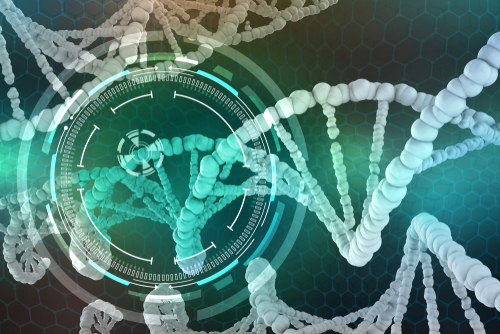2 New Mutations Found in Family with Epidermolysis Bullosa Pruriginosa, Case Study Reports

Two new potentially damaging mutations were identified in a family with epidermolysis bullosa pruriginosa (EBP), a rare type of epidermolysis bullosa characterized by severe itching of the skin, or pruritus, according to a case study.
The mutations were found in the COL7A1 gene that gives rise to type VII collagen protein, which is involved in the maintenance of the skin’s structure. The COL7A1 gene was already known to be associated with EBP.
The research team published the findings in a study titled “Coinheritance of 2 new potentially damaging heterozygous COL7A1 variants in a family with autosomal dominant epidermolysis bullosa pruriginosa,” in the journal Pediatric and Developmental Pathology.
EBP is a type of EB characterized by intense pruritus, the formation of blisters, and other skin lesions.
In the study, researchers at the Sheffield Children’s Hospital NHS Foundation Trust and King’s College London report the case of a family with EBP who have two previously unreported mutations in the COL7A1 gene.
The investigation started in August 2012 with a 13-year-old girl presenting a four-year history of frequent and intensively itchy blistering lesions on the ankles and shins.
Family records revealed cases of lichen planus — an inflammatory condition that affects the skin, hair, and nails — in two members of the family. Still, most family members appeared to be unaffected, with no other cases of skin disorders.
To determine the condition affecting the girl, and possibly the family, skin samples of the child were collected for laboratory analysis.
Tissue analysis revealed clinical features associated with EBP, such as the existence of fluid-filled blisters in the epidermis and abnormalities in the structure of skin cells called keratinocytes.
Analysis of all of the child’s genes with whole genome sequencing identified two mutations in the COL7A1 gene: a “missense” mutation that gives rise to the substitution of an amino acid and, therefore, to an altered version of type VII collagen protein; and a “splice site” mutation that leads to the alteration of the messenger RNA, the precursor of proteins, and thus to a different protein.
These mutations were found to be located in the same allele, a part of the chromosome.
Researchers, however, were unable to determine if only one of the mutations caused EBP symptoms or if both mutations worked together to cause the disease.
The team also identified these two specific mutations in the DNA of the child’s father and grandfather. The grandfather was one of the family members previously diagnosed with lichen planus.
Taken together, according to the team, these results show a “widespread familial variability, suggesting that behavioral and environmental factors are likely to contribute to disease,” as individuals with the same mutations showed different disease manifestations.
Overall, the researchers concluded that they have found two new “potentially pathogenic variants in COL7A1,” and that their study “expands the known genotype-phenotype variation observed in EBP and highlights the importance of histopathological and genetic correlation to ensure that the correct diagnosis of EBP is made, thus facilitating genetic counseling for affected individuals.”






